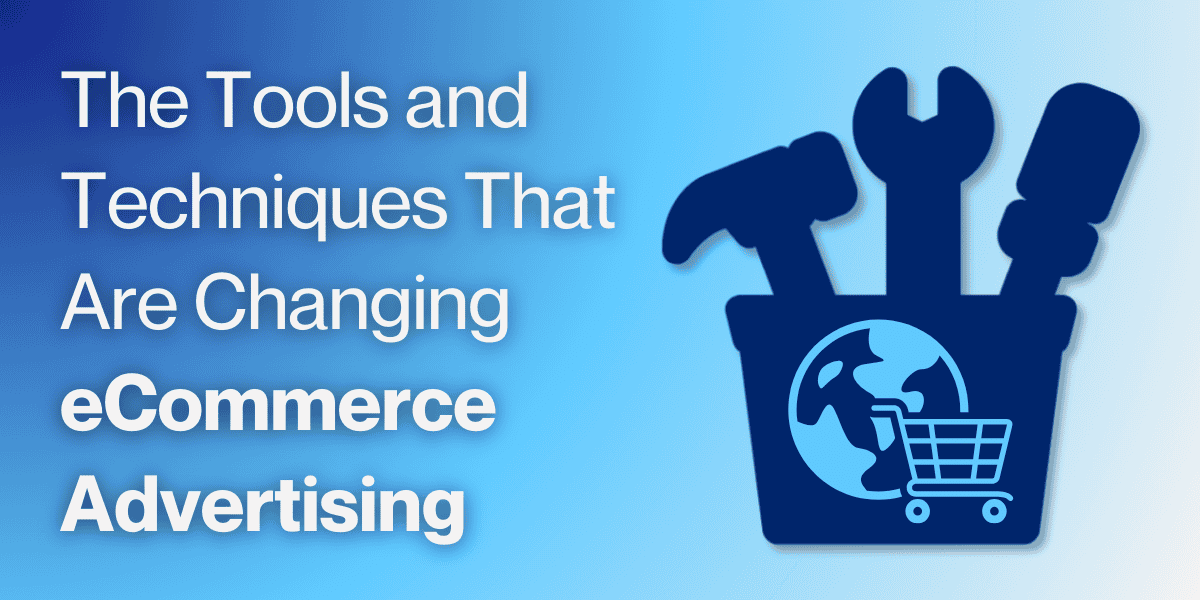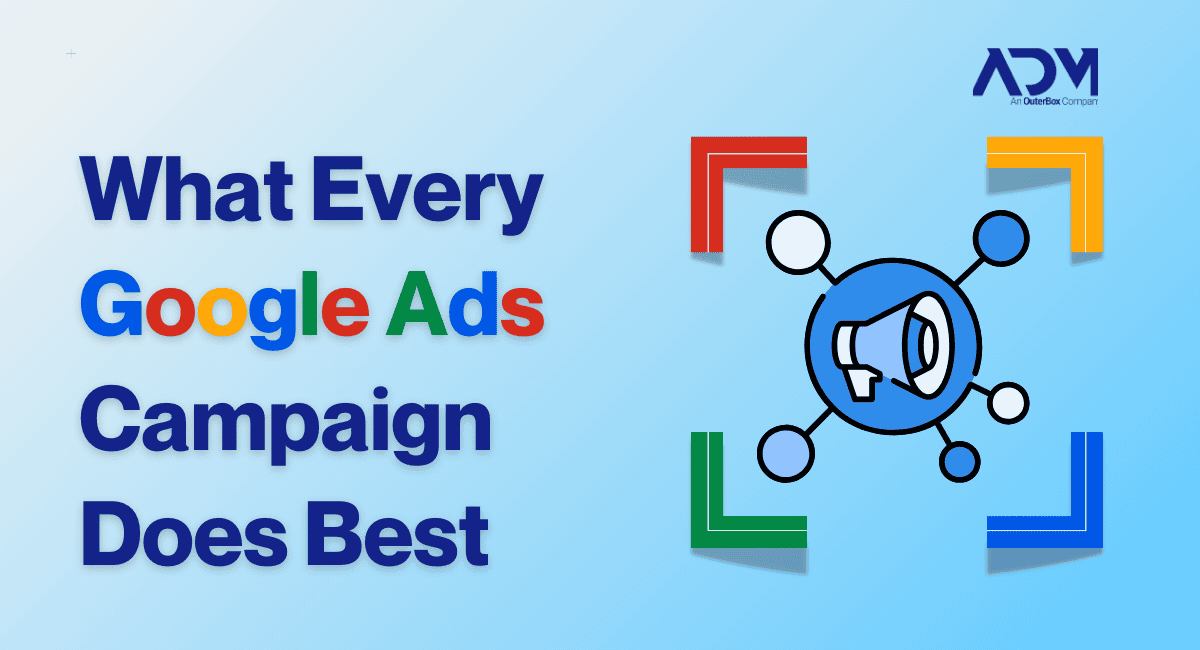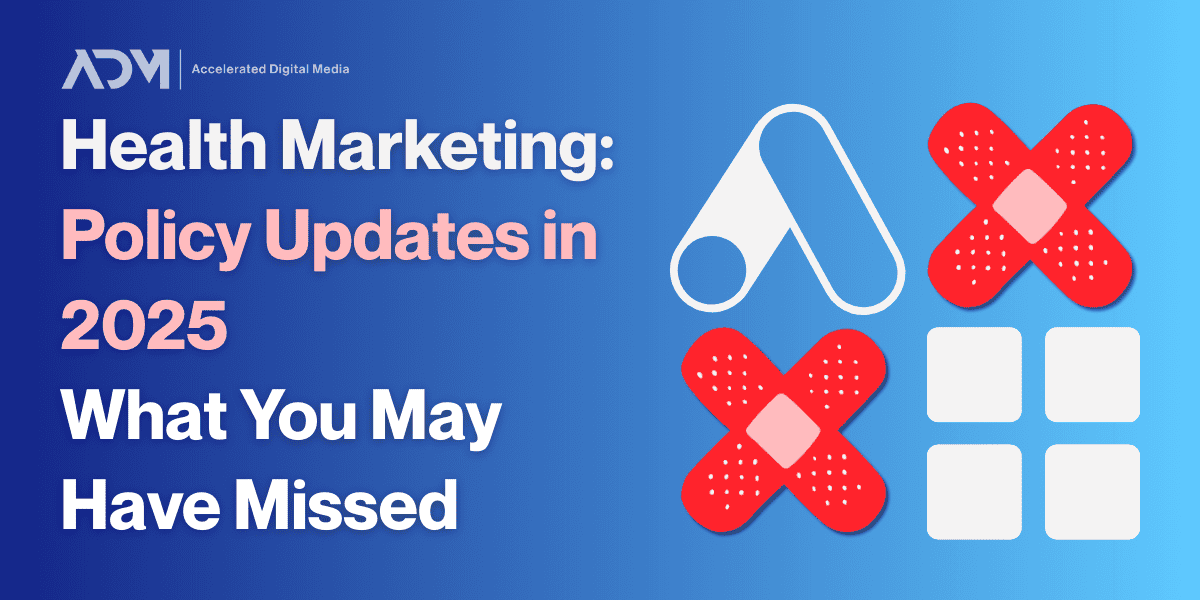What makes eCommerce so fascinating is that every aspect of the field is built on a rapidly-shifting technology infrastructure. Capabilities and techniques change based on advances by a handful of large companies (SEM and paid social media platforms) or jolts from third-party disruptors. That means that success or failure in eCommerce advertising often doesn’t come down to the benefits of your product so much as your mastery of the available tools and strategies..
As technology advances—and consumer behaviors adjust in its wake—businesses must adapt their advertising strategies to remain competitive. This blog explores new content styles and updated tools and features that are changing how eCommerce brands advertise today.
Jump to Section:
- New Google Ads Features for eCommerce Advertising
- New Meta Advertising Updates for eCommerce Brands
- Emerging Content Styles
New Google Ads Features for eCommerce Advertising
Google Ads is the bread and butter of many successful eCommerce advertising agencies, for good reason. It has the largest market share of any online marketing platform and can reach users across paid search, display, shopping placements, YouTube videos, and countless other mediums. That outsized market share has resulted in federal scrutiny—and a potential breakup of Google may be in the works, which would have unfathomable implications across the industry (and we’ll be writing plenty about that if and when it comes).
But in the meantime, Google is still tweaking its suite of eCommerce advertising tools, and some of those changes are making a huge difference for eCommerce brands today
Continual Improvements to Performance Max Campaigns
Google’s Performance Max campaigns have been revolutionary in and of themselves. Over the last year or so, they have received significant updates to address previous criticisms and enhance their functionality.
These Google Ads updates include the introduction of Budget Pacing Insights, which provide real-time spending updates and conversion projections, allowing advertisers to make quicker budget allocation decisions. Additionally, a new Customer Acquisition Goal has been introduced, enabling brands to prioritize growing their customer base—which can be highly useful for burgeoning eCommerce brands looking to widen their reach and garner repeat customers. These changes aim to improve transparency, customization, and performance tracking within Performance Max campaigns, empowering advertisers with more actionable insights.
Google has also added features like campaign-level negative keywords and “URL contains” rules for campaigns with product feeds, offering advertisers more control over search appearances. The ability to conduct final URL expansion testing allows for A/B testing of alternate landing pages, providing insights into performance differences.
Performance Max already offered massive advantages over prior Smart Shopping campaigns and quickly emerged as a terrific supplement to paid search campaigns. These updates make Performance Max even more effective, transparent, and pliable to specific marketing goals, which ADM believes has further enhanced its utility for our eCommerce advertising clients.
Tips for Leveraging Performance Max Updates:
- Utilize Budget Pacing Insights to adjust spending in real-time and optimize budget allocation.
- Implement the Customer Acquisition Goal to focus on acquiring high-value customers.
- Use campaign-level negative keywords to refine targeting and improve search relevance.
Short Videos and More Make for More Engaging Shopping Ads
There’s a longer theme that we’ll discuss at length later in this piece, which is that short-form video is everywhere. Google Shopping ads can now incorporate brief videos in your product listings, offering an engaging new way to showcase products at greater depth. This can have countless applications—we’ve seen it best deployed for product demonstrations and influencer collaborations. Video content captures consumer attention and provides a dynamic view of products, increasing engagement and conversion potential.
Beyond videos, there are other new Google Ads updates that add new multimedia dimensions to your product listing ads. The 3D Spin feature allows a 360-degree view of products, while Virtual Try-On helps apparel brands show products on models with different body types. These interactive features provide deeper shopping experiences, helping close the gap between in-person and online shopping.
Tips for Deploying Multimedia in Shopping Ads:
- Incorporate short videos to demonstrate product features and engage consumers; consider partnering with key influencers for nice audiences
- Homegoods brands and others that offer highly-visual items should invest in creating the necessary graphics to enable 3D Spin, while Virtual Try-On features to provide interactive shopping experiences for apparel marketing.
Google’s AI-Generated Product Visualizations
In another theme that will reappear later in this piece, Google has also introduced generative AI features that allow brands to contextualize their products for users. These features include visualizing how clothing fits different body types or placing the item in AI-generated environments—lke a piece of furniture in a room. These limited AI-generated product visuals are another tool that can allow eCommerce brands to showcase products without investing substantially in new creative iterations
Tips for AI-Generated Product Visualizations:
- Upload clean, high quality product images to facilitate cleaner AI-generated imagery
- Test for a period of time in certain campaigns before applying widely.
Profit-Focused Bidding Strategies
In a significant shift, Google Ads is now prioritizing profit-focused bidding strategies. By integrating cost, revenue, and margin data, these strategies optimize for net profit rather than just clicks or conversions. This approach helps eCommerce businesses align advertising efforts with business goals, ensuring that campaigns contribute to overall profitability. For businesses focused on growing their bottom line, this strategy offers a more comprehensive view of campaign success.
Tips for Profit-Focused Bidding Strategies:
- Set appropriate target cost-per action (tCPA) or target return on ad spend (tROAS) goals by comparing performance over time and adjusting based on campaign results.
- Focus on maximizing overall profitability by integrating cost, revenue, and margin data.
New Meta Advertising Updates for eCommerce Brands
Second only to Google in its digital marketing dominance, Meta Ads remains the premier place to advertise eCommerce products on social media. While some of its more futuristic obsessions—like the Metaverse—didn’t exactly pan out for advertisers (or anyone else, really), the social media giant has continued to sharpen its core advertising tools for better performance and return on investment.
Updates to Advantage+ Catalog Ads Create Opportunities
Meta’s Advantage+ technology has been a boon for advertisers—one of our clients once compared it to “Facebook in the old days” (before the infamous iOS update that greatly diminished performance). Advantage+ is particularly useful when paired with product listing ads. Now called Advantage+ Catalog Ads , these have seen significant updates in recent months which enhance their functionality and effectiveness for eCommerce brands.
Advantage+ Catalog Ads offer personalization at scale, automatically displaying highly relevant products to users based on their interactions with the brand, such as viewing products, adding them to the cart, or making a purchase. This dynamic, automated functionality leads to higher conversion rates, a stronger ROAS, and increased profitability compared to generic product ads on Meta platforms.
Advantage+ Catalog Ads now support the use of videos alongside static images, providing a richer product display. Additionally, Meta has introduced the ability to upload “hero” images within catalog campaigns, allowing the algorithms to populate other products around them, creating a visually appealing and cohesive ad.
Tips for Advantage+ Catalog Ads:
- Incorporate product videos in catalog ads to enhance product displays and engage users. UGC and influencer collaboration styles may fare best on social media.
- Utilize “hero” images to create visually appealing ad experiences.
The Growing Importance of the Conversions API
Meta’s Conversions API isn’t brand-new: It was first introduced in 2020. But as its capabilities have grown and the internist has changed, it has become more important. The Conversions API is now essential for tracking and verifying conversions, especially with upcoming changes in digital marketing tracking. As emerging privacy laws render pixel data less reliable, this tool provides a more accurate evaluation of campaign success, helping eCommerce brands adapt to changes in user activity tracking. By ensuring reliable conversion tracking, businesses can make informed decisions and optimize their advertising strategies.
Tips for Conversions API:
- Work with a dedicated eCommerce marketing agency to set up the Conversions API to ensure accurate conversion tracking and adapt to changes in user activity tracking.
- Use the API to gain insights into campaign performance and make data-driven decisions.
Emerging Content Styles: AI, Short-Form Video, and UGC
User behavior and preferences form a feedback loop with the technology that enables them, meaning the mediums that people relate to online—and thus the mediums that eCommerce brands advertise in—are always changing. Recent years have seen huge shifts in user preferences, which are coming head-to-head with the enormous new potential (and pitfalls) of AI-assisted creative content.
AI-Generated Content Offers Potential and Pitfalls
Perhaps the biggest shift in the digital landscape has been the widespread availability of AI tools that can generate text, graphics, and imagery. Easy access to these novel tools means they are becoming increasingly prevalent in digital marketing (and everywhere else), which creates both advantages and challenges.
On the positive side, AI tools can rapidly generate creative assets and, for some basic tasks, eventually level the playing field for brands who may not have the resources to hire a designer or copywriter. This can streamline the creative process and enable marketers to explore diverse content options without extensive manual effort.
However, there are notable disadvantages and risks associated with AI-generated content. AI tools may produce unconventional or unusual imagery that does not align with brand standards. Additionally, AI-generated copy may lack the nuance and emotional resonance that human-created content can provide, potentially impacting the effectiveness of the ads. It’s crucial for marketers to critically evaluate AI-generated content and ensure it aligns with brand messaging and quality standards.
Tips for Using AI-Generated Ad Copy and Graphics:
- Experiment with generating basic AI creative—backgrounds, shorter texts—to ensure quality before requesting more complex materials
- Ensure AI-generated visuals and copy align with brand standards and messaging.
- Balance AI-generated content with human input to maintain emotional resonance and quality.
- Test AI-generated content in limited campaigns before expanding
Short-Form Video Content is Here to Stay—Even if TikTok Isn’t
The rise of short-form video content, popularized primarily by TikTok, is reshaping countless digital marketing strategies. Out are longer explanations and narratives, in are brief bursts of information and appeal. Short-form video doesn’t just appeal to younger audiences, as a significant portion of users on these platforms are over 25.
While TikTok’s ongoing legal status in the US remains in question, the popularity of short-form video is pretty well settled. Google and Meta have both introduced their versions of the same experience with YouTube Shorts and Instagram Reels, which offer similar formats that cater to shorter attention spans.
Tips for Leveraging Short-Form Video:
- When creating short-form videos, get to the point fast. Users swipe too quickly for extended context.
- Optimize video content for mobile-first viewing to reach broader audiences.
- In the case of TikTok’s demise, shift creative assets and budget to YouTube Shorts and Instagram Reels to maintain reach and engagement.
User-Generated Content (UGC) Has Become Ubiquitous
User-generated content (UGC) has become a powerful tool in digital marketing, offering authenticity and relatability that traditional ads often lack. UGC involves real or real-seeming customers showcasing products, which can foster brand trust and engagement. Platforms like TikTok and Instagram are ideal for UGC-style content, because the content sinks in with the user expectations on those platforms and allows brands to influence purchasing decisions while staying in the native style of those platforms.
While UGC has been around for some time, its increasing ubiquity has made it more versatile. Some brands have begun to UGC-centric ads have begun to test their UGC on platforms like Connected TV, hoping to see if its improved performance metrics can translate to traditional media formats.
Tips for Utilizing UGC:
- Encourage customers to create and share content featuring your products.
- Collaborate with influencers to produce authentic UGC-style content.
- Use UGC to build brand trust and engage audiences effectively.
- Consider testing successful UGC on non-traditional platforms.
The eCommerce Marketing Agency That Stays Ahead of It All
eCommerce marketing is always going to change. Novel technology and bubbling trends quickly become the new normal—and can fade into old news just as fast. That’s why it’s essential to partner with an eCommerce advertising agency that can keep up with it all. As a Meta Business Partner and Google Premier Partner, ADM gets direct support and access to beta features so we can learn new techniques faster.
If you’re looking for insights on how to improve your eCommerce marketing strategy, don’t hesitate to reach out to our team today.



